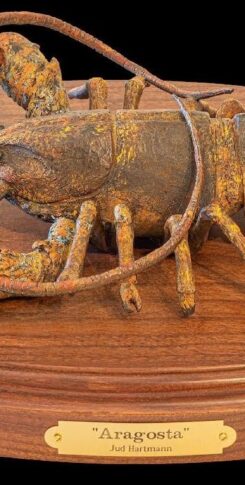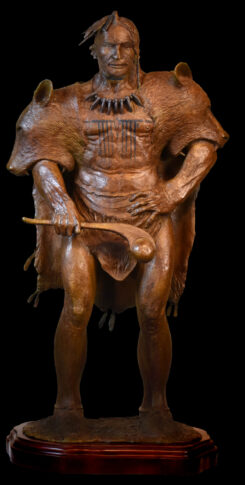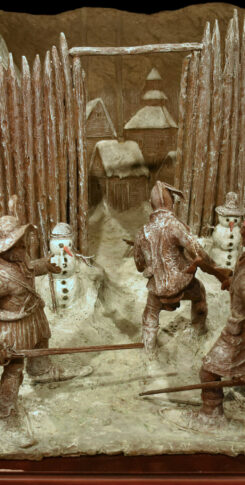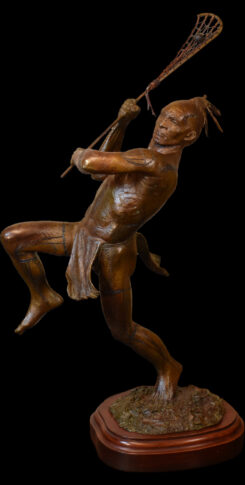2002 | Bronze edition: 25 | Height: 21″
Certain men renowned as warriors and hunters or endowed with a gift for oratory qualified as leaders in Wabanaki society were called Sagamores. Great Sagamores were known to possess as well, special spirit power which power which enabled them to accomplish extraordinary feats. The greatest Shamans were likely to be the most important chiefs.
Madockawando is remembered as a “great chief of the Penobscots.” His village was at Pentagoet, (modern-day Castine, Maine), and his daughter Pidianiski, baptized Molly Mathilde (1665 – 1717) married Baron de St. Castin (1652 – 1707).
Among the nomadic Wabanaki – the tribes of the Maritimes, Maine and the rest of Northern New England – Shamanism was commonly attributed to the greater chiefs to whom supernatural power would give authority in the absence of a strong social organization.
Madockawando as chief and Shaman was a soothsayer, clairvoyant, necromancer, exorcist and was in a position to act as middleman between his people and the powers that meddle with life. Indeed the very ending of his name….means mysterious, magical, powerful, miraculous, enabling things to be done supernaturally!
He is a “wonder – worker” whose powers derive from the spiritual and animal realm. He could lead them to game, drive out disease and circumvent the magic of his enemies. Ordinary men could fight, but only the man with magic could contend with the unseen powers and work out destiny.
From “Old John Neptune and Other Maine Indian Shamans”
by Fannie Hardy Ekstorm, 1938





